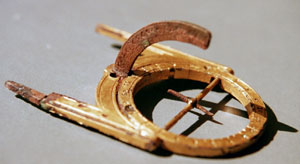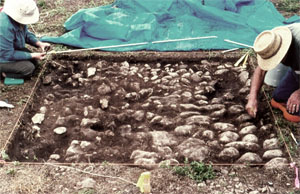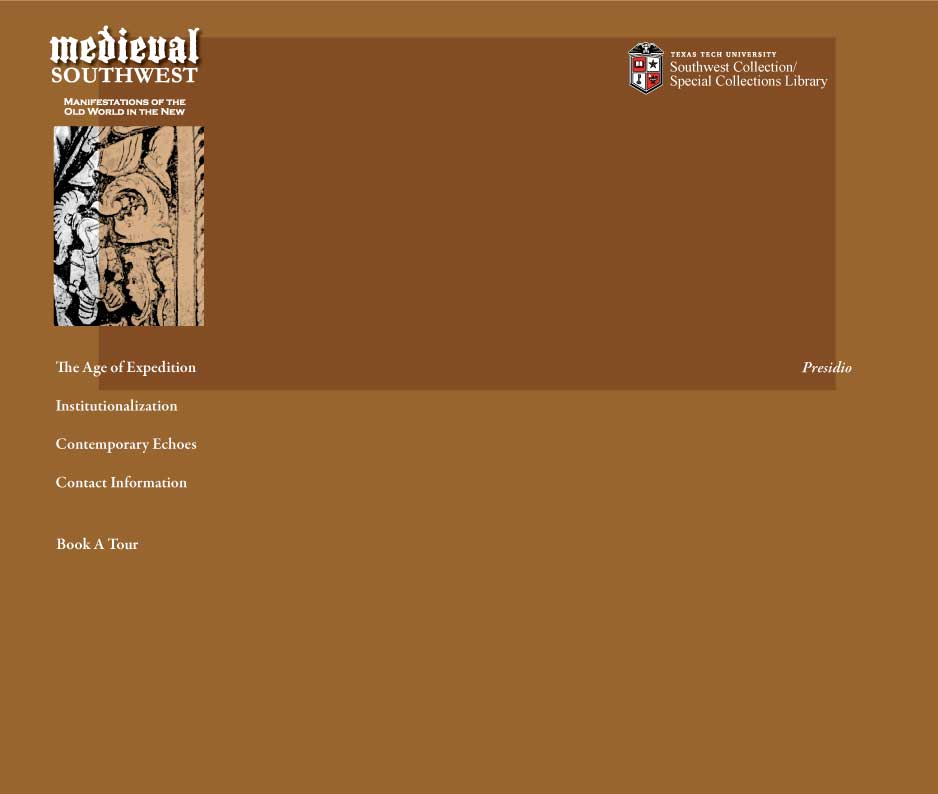The Presidio San SabÁ
Established in 1757, Presidio San Sabá, formed a large military presence along the Northern frontier of New Spain. In fact, the site represents the largest Spanish Colonial fort in Texas. Initially founded along with Mission San Sabá, the purpose of the fort was to protect the missionary efforts of the Franciscans and to hold and potentially expand the frontier. Less than a year after the fort was erected, however, the mission, meant for the Apache, was attacked and destroyed by the Comanche and their allies. No efforts were made to re-establish the mission although the presidio remained open for the next 10 years or so before it was officially closed. Despite some success in reducing the number of Indian raids carried out in San Antonio, the dream of enlarging Spain’s holdings in the New World was not realized at San Sabá. With the closing of the mission, the presidio was virtually isolated from other Spanish settlements. Indian raids on the fort and attacks on the supply trains destined for San Sabá led to food and provision shortages. As a result, malnutrition and disease plagued the approximately 200 soldiers and their families residing at the fort.

[right] Gold-plated, brass pocket sundial bearing the date 1580 found in a barbeque pit amid the bones of oxen slaughtered and cooked by the victorious Indians. This rare and extremely well preserved artifact was conserved by Dr. Donny Hamilton of Texas A&M University who reports that the brass alloy had a high percentage of copper. Photograph by Grant D. Hall.
Formal archaeological investigations at Presidio San Sabá commenced in 2000, when Texas Tech University began a field school at the site. In 2003, the Texas Archeological Society joined Texas Tech’s efforts, eventually holding 3 field schools at the presidio. Research at the site continues today and is focused on two primary goals. A primary goal is to understand the architecture of the site. Very little of the original fort is visible above ground today. Although we have a general knowledge of the physical layout of the fort, as depicted in the two 1767 maps created during the Marquis de Rubí’s military inspection tour, changes to the fort were made both before and after this date that are not clearly understood. Historical documents pertaining to the architecture of the fort do provide some clues to the changes that took place at San Sabá, however, gaps in the documents and conflicting accounts of the presidio’s layout create a number of questions that can only be answered through archaeology. Identifying and recording the physical remains of the fort is therefore a key objective of the investigations. Buildings and architectural features uncovered during the TTU and TAS field schools are now being compared and contrasted with the documentary record in order to provide a much fuller understanding of the fort’s physical evolution.

[left] Cobblestone pavement excavated during the Field School in 2007.
A second objective is the reconstruction of presidio
lifeways. The material remains and food trash left behind, thrown away, or
lost by the fort’s residents are slowly recovered during excavations
allowing the archaeologists an opportunity to study the people of San Sabá
through their artifacts. Historical records pertaining to the presidio tend
to focus on the military aspect of the fort with little or no attention paid
to the daily lives of the people who called this place home for more than a
decade. Archaeology provides an opportunity to study what live was like for
these people on a day-to-day basis. Food remains provide information on
diet, fragments of pottery and metal goods tell us about trade and access to
supplies, religious items such as crucifixes and medallions inform us of
religious practices. Furthermore, military artifacts such as lead shot,
sprue, and gun parts reflect the preparedness of the garrison and their
ability to defend the fort. Many of the military-related items recovered
also suggest evidence of recycling serving to underscore the overall poor
conditions experienced by the soldiers and their families.

[right] Close up of a decorative seal for a flour sack.
The picture of Presidio San Sabá now emerging from the historical and archaeological research is one of isolation and survival. The soldiers lived in fear of Indian attack and more than once left the fort only to be ordered back. Much needed supplies cutoff by raids resulted in a shortage of goods and difficult times. For example, archaeologically this pattern is reflected in the myriad of pottery types represented in the artifact assemblage and evidence of extensive recycling of metal artifacts. Clearly domestic items such as pots and cooking utensils were obtained whenever possible from multiple sources and when supplies are low recycling becomes a must. Likewise, changes to the fort’s architecture also reflect conditions at San Sabá. The Presidio Restoration Committee and the local community of Menard are working towards the eventual reconstruction of the fort and are largely responsible for bringing attention to this important Texas site. The archaeology will aid in the reconstruction process by providing an accurate picture of the fort’s physical changes through time. From its beginnings as a temporary, wattle-and-daub construction to the later stone fortress built after the attack on the mission, the architecture of San Sabá mirrors the struggles of the Spanish to protect and maintain their hold on the Texas frontier. Although only in its preliminary stages, the archaeology of Presidio San Sabá will continue to inform us about this most spectacular site and the people who lived here.
Institutionalization -- San Saba -- Mission -- Presidio -- Music -- Globalization
